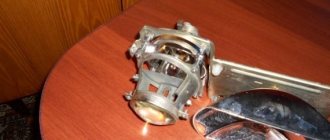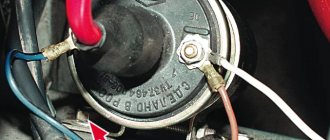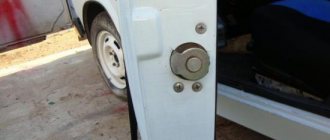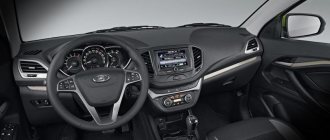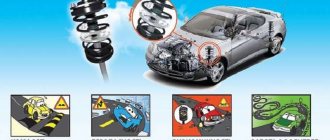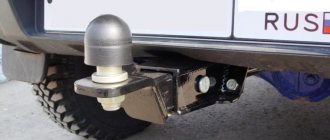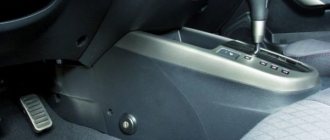Disassembling the headlight may be necessary for cleaning, replacing a broken internal element, painting the inside, or installing additional components (for example, angel eyes, LED strips). For most car enthusiasts, the thought of disassembling a headlight can be intimidating. However, this process is not too difficult if you study the information first and do everything correctly. In this article we will figure out how to disassemble the headlight. Most modern headlights have an adhesive connection between the headlight housing and its lens (the transparent part of the headlight). Let's look at ways to disconnect this connection, their advantages and disadvantages, as well as restoring the tightness when putting the headlight back together.
Introduction to the topic
Few car owners know how to disassemble a headlight, but they are willing to sacrifice personal time and money to install xenon lenses, which will have a better effect on driving safety at night.
The lighting devices of most modern cars are equipped with special parts that contain xenon lamps. The powerful light from gas-discharge components performs well not only at night, but also in conditions of snowfall, fog, and rain.
Xenon is considered a sign of an expensive foreign car with a bunch of options and a set of modern systems. However, many manufacturers have started producing components for independent implementation in almost any headlight.
For installation, you need to disassemble the optics; in addition, you will need a set of lenses, gas-discharge lamps, sealant, screwdrivers, a hair dryer, spatulas and a lot of patience.
Why do you need to replace the canopy glass?
Let's figure it out first, why is it necessary to replace the headlight glass of a VAZ 2110 or 2114:
- It's simple - glass separately is cheap and there is no need to buy expensive headlights entirely. The reason why it is needed is some pebble that has fallen on the glass or other foreign object. When the glass of the lamp cracks, the light from the headlights becomes dim.
- In addition, the headlight glass of a VAZ 2114 or VAZ 2110 may fade over time and then again, by the way, there will only be a replacement. Polishing rarely helps in this case, and this process is not so easy.
It’s easier to buy headlight glass and quickly replace it. - It’s easier to buy disassembled flashlights at flea markets. There you can find the glass you need and buy it very cheap. The assembled headlight itself costs about 5,000 rubles each. Why, one might ask, buy an expensive accessory if you can simply replace the glass?
Every motorist sooner or later faces problems with headlights. And he does what is best for him. If the headlight has become unusable, you can replace it as an assembly. To do this, you just need to buy a new model, sealant, film. Then dismantle the old headlight, apply sealant to the new lamp, and then calmly glue it in place. During the process, you need to ensure that no dust or dirt gets between the connections.
Description of automotive optics
Car headlights vary in appearance, size and type. However, the parts meet stringent requirements for certain characteristics. For example, for right-hand traffic, the optics must correctly collect the beam of light, have a clear limitation without flare horizontally and a clearly defined “daw” towards the side of the road. This luminous flux allows you not to dazzle oncoming drivers and illuminate the side of the road on the right.
You can form and direct the light beam:
- headlight reflector;
- lens;
- outer glass.
The reflector is most often used with halogen lamps, but there are exceptions with xenon. The lens is used to form the beam for all types of lamps. It can be halogen, xenon or even LED.
Glass with special guide ribs on the inside can be seen on old foreign cars produced before 1990. The most striking example is considered to be a lantern from an old Zhiguli. For example, on the glass of a VAZ 2107, stripes are clearly visible, which are responsible for collecting the light flux.
Structurally, any headlight consists of:
- housings;
- glass;
- reflector;
- lamps;
- wires and plugs.
Loss of transparency
Over time, headlights can become dull in color due to constant exposure to rising asphalt particles. In addition, optics made of polycarbonate also lose transparency when exposed to sunlight. Typically, polymer headlights are treated with a protective compound, which is important not to be damaged during the polishing process. Therefore, fine polishing should be used to restore transparency and remove minor damage; more serious damage can only be repaired after removing the factory protective layer. Upon completion of the work, it is recommended to apply anti-gravel film.
Description of lenses
The lens is the most favorable component for installing a gas discharge lamp. The internal device allows you to accurately collect the light flux and direct it to the right place, providing a clear cut-off line and a clearly defined daw.
Lenses are divided into:
- xenon;
- bi-xenon
The bi-xenon version comes with a special built-in curtain that covers the light flux in low beams and opens completely in high beams. Thus, one lens is sufficient for installation in a headlight with one module. Classic components are responsible only for high or low beam and are not equipped with a curtain.
How to open and disassemble a headlight
How to restore a headlight reflector
Changing the “right-hand drive” low beam beam by disassembling the headlight... This is what the headlight looked like before preparation - the beam was adjusted with pieces of aluminum tape.
How to find the right places on the reflector? We attach a piece of paper ~1×1cm to a thin stick and begin to move it along the reflector, carefully observing the beam. Quite quickly we find the necessary sectors and temporarily seal them with paper tape. As soon as all the “unnecessary” places are found and the beam becomes satisfactory, remove the tape and use a knife to remove the chrome in these places. There were thoughts not to spoil the reflector but to seal it or paint it with something, for example, gray heat-resistant paint for mufflers - but I decided not to risk it .
What is needed for installation work
To install bi-xenon and classic lenses, you will need to complete the following steps:
- Remove the headlights from the car. This may require a special tool.
- Warm up the light fixtures with a hairdryer, disassemble the module and remove the old sealant.
- Remove the halogen lamp from the reflector and unscrew all fasteners.
- Place the lens into the hole that appears and secure it with the retaining ring on the reverse side.
Installation of lenses in the headlight is carried out in accordance with the side position indicators. Otherwise, the “daw” will be turned the other way around and the beam will shine incorrectly. After installation, you will need to install ignition units in the engine compartment and connect the wires.
How to disassemble a headlight, rules for performing the procedure
Making eyelashes for the headlights
No matter what car the headlight on is broken (on Kalina, on Priora or another vehicle), the rules for disassembling the mentioned device look like this:
- The sealing compound should be heated evenly, relative to the entire perimeter of the lighting fixture. At the same time, the maximum heating temperature of the sealant is 3000 degrees. Otherwise, the device may be damaged.
- Avoid applying significant force when working with a car light. This is due to the comparative fragility of the material from which the device is made.
- When removing the headlight, you must turn off the power supply to the vehicle. Such actions will prevent a short circuit.
At the same time, you should be guided by the information contained in the instructions for the vehicle.
Dismantling and disassembling optics
It is not possible to disassemble the headlight directly in the car, so the optics will have to be removed. Cars use different mounting systems; many models will require the front bumper to be removed.
Typically, the optics are mounted with 1 or 2 bolts on top and several latches on the bottom, under the bumper. To remove the part you need to do the following:
- Open the hood and remove the negative terminal from the battery.
- Unscrew the screws holding the headlights.
- Disassemble the back cover and remove the chips and wires.
- Remove lighting fixtures.
Some manufacturers use a latch system that does not require the use of bolts. It is quite easy to disassemble and remove such a part.
To install lenses, we must disassemble the optics. To do this you need:
- Unscrew all the screws along the contour of the glass on the back side.
- Disassemble the retaining clips and latches.
- Take out all the light bulbs.
- Place the part in a box of suitable size with a small hole for a hair dryer.
- Close the box and heat the headlight for 5–8 minutes.
- The softened sealant will easily come off if you carefully pry the glass with a flat-head screwdriver.
Often the headlight is assembled using a special rubber glue, which is easily softened in a box with a hairdryer. You should carefully remove any remaining compound that will interfere with the assembly of the headlight.
To remove the reflector from the headlight housing, screw in the adjusting screw to the end of the thread and remove the plastic fastener.
Recommendations
Comments 40
Heat it in the oven, and the glue that holds the reflector comes off and can be separated with a little effort, but I can’t tell you the time and temperature.
Break it, and put a new one on the sealant, everything is good!
Give Andrey Chemaev all the ingredients, he will do a full service for your headlights, they will be as good as new.
Someone seemed to boil them and the glass fell out on its own.
Saw SHURA it is Golden.
In order to preserve the glass, I cut the reflector with a grinder, retreating about 1 cm from the edge of the glass, but I didn’t have time to cut halfway - the glass fell out on its own, and so on both headlights.
thanks for the advice, if a hairdryer doesn’t work, I’ll try that
When I was painting the lenses, I peeled back the iron edging of the headlight and then used a utility knife to cut the sealant in a circle. And carefully cut it with a knife
when I started to bend it on the new Russian headlight, the glass began to crack
It turned out strange for me. In general, go for it, the main thing is not to be afraid and not to think about the bad! Try pouring solvent onto the sealant, it may peel off and then come off
when I started to bend it on the new Russian headlight, the glass began to crack
What if you pour solvent inside the headlight and leave it for another hour?!
What if you pour solvent inside the headlight and leave it for another hour?!
won't the reflector eat it?
Will devour. So he needs to remove the current glass from there
oh, that’s right) something I’m not paying attention to)
warm it up evenly with a hairdryer, be sure to wear gloves so that the glass does not crack, be sure to warm it up evenly and slowly, after a good warm-up, try to carefully pick up the glass with a scalpel, if it doesn’t help, apply brake fluid along the contour and leave it for a couple of days, then repeat the operation.
oh, special thanks for the brake, I'll try it
But in general, maybe there are small L-shaped scalpels in nature, or what are some sales devices to get under the edging? Or is it easier to do this “sharpening” yourself? I also can’t imagine how to get there with a knife.
that was also the idea
But in general, maybe there are small L-shaped scalpels in nature, or what are some sales devices to get under the edging? Or is it easier to do this “sharpening” yourself? I also can’t imagine how to get there with a knife.
Similar L-shaped crap is available in kits for removing glued glass (windshields, etc.)
there's a healthy one, I need a miniature one
you can try making an engine/gearbox dipstick by sharpening and bending the end, they are quite rigid and elastic at the same time (which are made from a strip of metal)
ooooh, good idea! collective intelligence is a good thing.
With collective wisdom, if everyone works hard, they can build a new Mars rover in a couple of months, to the envy of NASA)))
With a hammer New glass costs 50 rubles
All the same, in the process of “carefully peeling off” you will crack or break
The result is the same, but with a hammer it’s faster
Excellent advice to a person who bought headlights for the glass)
Well then, on the contrary, cut off the reflector with a grinder)
With a hammer New glass costs 50 rubles
All the same, in the process of “carefully peeling off” you will crack or break
The result is the same, but with a hammer it’s faster
you completely fell from grace, he bought these glasses for 8000 rubles
well, in vain. On Avito nearby, in Elektrostal, there were new headlights for that money for two months, until I was ready to buy them.
If I'm not mistaken, on old cars the windows were glued with BF type glue, and when it hardened, it became like glass. Can use a drill with a cutter to carefully cut along the glue
Using an engraver, cut off the “rolling” and “cut off” the glass with a stationery knife.
Source: www.drive2.com
Lens installation
It is not difficult to place lenses in headlights with your own hands. The main thing is to follow the signs on the upper and lower sides. The body of the lens is placed in the hole where the lamp stood and screwed into a ring on the reverse side. The ring is included in the package. All work is carried out wearing fabric gloves - also part of the kit.
It will take no more than half an hour to install the lenses in the headlights. The most time-consuming part of the process is running the wiring through the back wall of the headlight housing. You can insert the wires using a drilled hole, which must be filled with rubber glue.
Repair of plastic auto optics
The easiest way to eliminate defects in plastic is hot air welding. A polypropylene headlight can be given a second life using conventional welding. Welding seams are used to connect completely separated parts of the headlight, since gluing in this case is ineffective. It should be borne in mind that when connecting different materials, it is almost impossible to achieve strength - a headlight welded from different types of plastic will last no more than 1-2 weeks.
Repairing the headlight housing is a more labor-intensive procedure, which is often performed using the prosthetic method (replacing individual metal parts with new ones). It is better to entrust such work to service center specialists.
Installing ignition units and adjusting light
Ignition units are installed inside the headlight housing or outside in the engine compartment of the car. If one of the units fails, you will have to disassemble the case again and remove the glass, so it is more convenient to place the electronics behind the bumper or directly under the headlight using double-sided tape.
Xenon devices shine perfectly even in heavy snow and fog, but for correct operation they require professional setup using a special stand. This procedure is offered at each maintenance station and is inexpensive.
About Us
We are a certified installation center for additional equipment. For 7 years now we have been repairing, modernizing and tuning automotive optics of any complexity for cars of different brands and models. We provide a 1-year guarantee on work carried out by us. We specialize in installing/replacing Bi-Led and Xenon lenses, repairing and improving the light of standard headlights. Any work with auto lighting and backlighting. All equipment is in stock, installation in your presence.
Installation of additional equipment in a service station means: - preservation of the vehicle warranty - 1 year warranty on work - accurate and honest consultation - individual approach - confidence in the quality of work - completion of the order on time
Contacts
Found lower prices?
Leave a request, we will make an even better offer!
Privacy Policy
Maintaining your privacy is important to us. For this reason, we have developed a Privacy Policy that describes how we use and store your information. Please review our privacy practices and let us know if you have any questions.
COLLECTION AND USE OF PERSONAL INFORMATION
Personal information refers to information that can be used to identify or contact a specific person. You may be asked to provide your personal information at any time you contact us.
Below are some examples of the types of personal information we may collect and how we may use such information.
